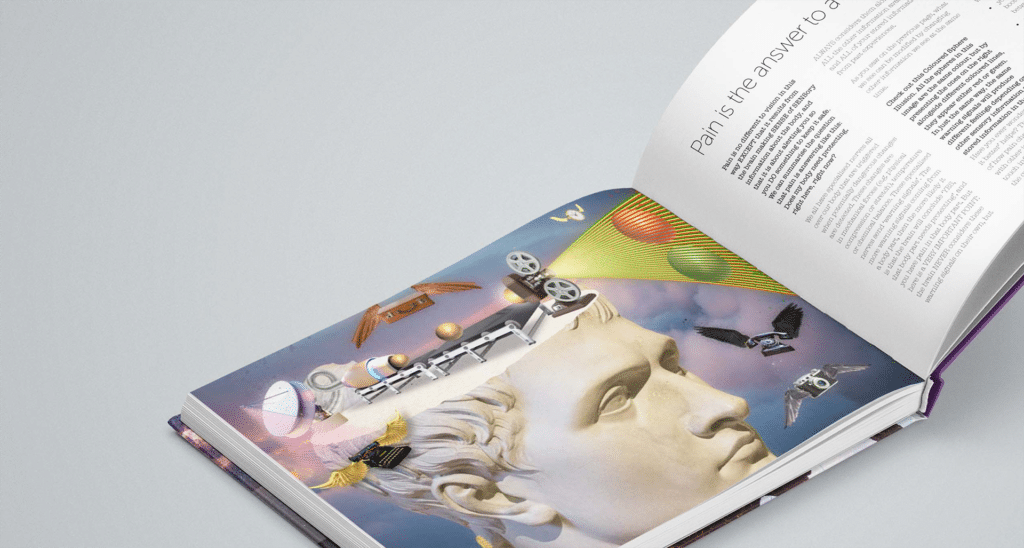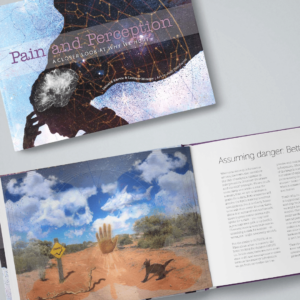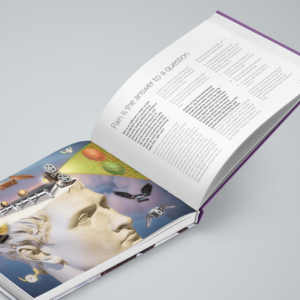
I’ve just read Daniel Harvie and Lorimer Moseley’s new book, Pain and Perception: A closer look at why we hurt, and honestly, I’m really excited. I think it’s because the visual illusions they use make the book feel super tangible – they provide real-life examples for how your brain works (by showing how your perceptions can be played with). For so many of these illusions, I simply CANNOT see them ‘accurately’, even though I know I am perceiving them ‘inaccurately’. For other illusions, I seem to be able to switch between ‘accurate’ and ‘inaccurate’ perceptions of reality – crazy right? Dan and Lorimer succinctly explain how and why the brain does this. And what this means for pain.
Understanding perception through experiencing these illusions also facilitates empathy for others; it allows us to appreciate that perceptions are just as real when they are difficult to understand as when they are straightforward. I have never come across a book on pain that achieves this to such a high degree. It doesn’t matter if you’ve never experienced persistent pain, or perhaps even pain at all, this book provides a window into what pain might look like for others.
Coming from my research background, I see the links to the notions of Predictive Processing – a topic that’s deeply compelling and frankly, intimidating. It’s something I have yet to fully grasp. The cleverness of this book lies in its ability to teach these complicated concepts so simply and clearly – you don’t need to be a brain scientist to understand. Because of this, I am absolutely itching to send it to my nearest and dearest and say, “Hey! This is the stuff I’m into. How cool is science??” #NerdAlert (Here’s a couple of Predictive Processing blogs if you’re interested: 1 & 2)
Anyway… clearly, I’m a fan. Read on to hear from Dan Harvie about the book’s beginnings…
–Anna Vogelzang AEP ESSAM
Noigroup Research Assistant
Masters by Research Candidate @IIMPACT_health
 |
Pain and Perception: A closer look at why we hurt |
___________________________________
For quite a long time, and perhaps still, it was rare to see Professor Lorimer Moseley give a talk about pain that didn’t include an illusion. I, and many others, caught on. The reason for this was simple: you can talk about the complexity of perception all you want, but there is nothing like experiencing it for yourself.
I think many of us have had a sense that experiencing the weird and wonderful ins-and-outs of perception through illusions can open doors. Doors to accepting new ways of thinking about pain. I assume this was the reason Lorimer came up with ‘the Brain Bus’. If you are new, the Brain Bus is part of the painrevolution.org Rural Outreach Tour and is a travelling experiential learning lab, where we get hands-on with illusions. These illusions become triggers for conversations (with anyone who will listen) about the complexity of perception, and by extension, pain. Importantly, we have not viewed or used illusions as a ‘trick’, but as a window into how perception REALLY works.
In my second year as the Brain Bus Captain (best title ever) it became clear that some of our perception- and pain-related key messages were highlighted beautifully by some illusions, and other key messages by other illusions. Inspired by the science of pain and perception, and our experience using illusions in pain education, Lorimer and I have authored a new book! The book aims to disentangle Pain and Perception through illusions and in doing so, take A Closer Look at Why We Hurt.
Thanks to some very speedy work from Noigroup, we hope you can soon see what is shaping up to be a beautiful book and an accessible read. I admit I’m a bit excited about the interactive elements.
–Daniel Harvie
PhD, M. Musc. Sports Physio., B. Physio (Hons)
Dr Daniel Harvie is a NHMRC Research Fellow at the University of South Australia, an Adjunct Fellow at Menzies Health Institute Queensland, Griffith University, and a two-time national innovation iAward recipient. Read more about Dan and his commitment to pain science communication at danielharvie.com.
 |
Pain and Perception: A closer look at why we hurt |

This sounds brilliant thank you for all the work you do!
A light shining thru the darkness of thought. I look forward to being pain free once more with the direction mapped out in your positive & informative ‘brain food’ information. Thankyou
I’m a general practicioner who gives pain education to my patients. All publications of the noigroup help me a lot